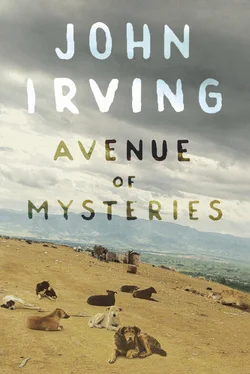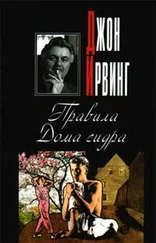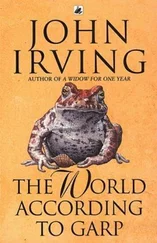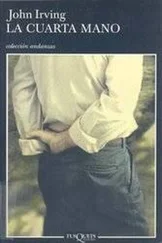“She looks rich, you mean,” Juan Diego said.
“The Solitude Virgin is not one of us,” Lupe declared. She meant not indigenous. She meant Spanish, which meant European. (She meant white. )
The Solitude Virgin, Lupe said, was “a white-faced pinhead in a fancy gown.” It further irked Lupe that Guadalupe got second-class treatment in the Basílica de Nuestra Señora de la Soledad; the Guadalupe altar was off to the left side of the center aisle — an unlit portrait of the dark-skinned virgin (not even a statue) was her sole recognition. And Our Lady of Guadalupe was indigenous; she was a native, an Indian; she was what Lupe meant by “one of us.”
Brother Pepe would have been astonished at how much dump reading Juan Diego had done, and how closely Lupe had listened. Father Alfonso and Father Octavio believed they had purged the Jesuit library of the most extraneous and seditious reading matter, but the young dump reader had rescued many dangerous books from the hellfires of the basurero.
Those works that had chronicled the Catholic indoctrination of the indigenous population of Mexico had not gone unnoticed; the Jesuits had played a mind-game role in the Spanish conquests, and both Lupe and Juan Diego had learned a lot about the Jesuitical conquistadors of the Roman Catholic Church. While Juan Diego had at first become a dump reader for the purpose of teaching himself to read, Lupe had listened and learned — from the start, she’d been focused.
In the Solitude Virgin’s basilica, there was a marble-floored chamber with paintings of the burro story: peasants were praying after they had met and were followed by a solitary, unaccompanied burro. On the little donkey’s back was a long box — it looked like a coffin.
“What fool wouldn’t have looked in the box right away?” Lupe always asked. Not these stupid peasants — their brains must have been deprived of oxygen by their sombreros. (Dumb countryfolk, in the dump kids’ opinion.)
There was — there still exists — a controversy concerning what happened to the burro. Did it one day just stop walking and lie down, or did it drop dead? At the site where the little donkey either stopped in its tracks or just died, the Basílica de Nuestra Señora de la Soledad was erected. Because only then and there had the dumb peasants opened the burro’s box. In it was a statue of the Solitude Virgin; disturbingly, a much smaller Jesus figure, naked except for a towel covering his crotch, was lying in the Solitude Virgin’s lap.
“What is a shrunken Jesus doing there ?” Lupe always asked. The discrepancy in the size of the figures was most disturbing: the larger Solitude Virgin with a Jesus half her size. And this was no Baby Jesus; this was Jesus with a beard, only he was unnaturally small and dressed in nothing but a towel.
In Lupe’s opinion, the burro had been “abused”; the larger Solitude Virgin with a smaller, half-naked Jesus in her lap spoke to Lupe of “even worse abuse”—not to mention how “stupid” the peasants were, for not having the brains to look in the box at the beginning.
Thus did the dump kids dismiss Oaxaca’s patron saint and most fussed-over virgin as a hoax or a fraud — a “cult virgin,” Lupe called la Virgen de la Soledad. As for the proximity of the virgin shop on Independencia to the Basílica de Nuestra Señora de la Soledad, all Lupe would say was: “Fitting.”
Lupe had listened to a lot of grown-up (if not always well-written) books; her speech might have been incomprehensible to everyone except Juan Diego, but Lupe’s exposure to language — and, because of the books in the basurero, to an educated vocabulary — was beyond her years and her experience.
In contrast to her feelings for the Solitude Virgin’s basilica, Lupe called the Dominican church on Alcalá a “beautiful extravagance.” Having complained about the gold-encrusted robe of the Solitude Virgin, Lupe loved the gilded ceiling in the Templo de Santo Domingo; she had no complaints about “how very Spanish Baroque” Santo Domingo was—“how very European. ” And Lupe liked the gold-encrusted shrine to Guadalupe, too — nor was Our Lady of Guadalupe overshadowed by the Virgin Mary in Santo Domingo.
As a self-described Guadalupe girl, Lupe was sensitive to Guadalupe being overshadowed by the “Mary Monster.” Lupe not only meant that Mary was the most dominant of the Catholic Church’s “stable” of virgins; Lupe believed that the Virgin Mary was also “a domineering virgin.”
And this was the grievance Lupe had with the Jesuits’ Templo de la Compañía de Jesús on the corner of Magón and Trujano — the Temple of the Society of Jesus made the Virgin Mary the main attraction. As you entered, your attention was drawn to the fountain of holy water — agua de San Ignacio de Loyola — and a portrait of the formidable Saint Ignatius himself. (Loyola was looking to Heaven for guidance, as he is often depicted.)
In an inviting nook, after you passed the fountain of holy water, was a modest but attractive shrine to Guadalupe; special notice was paid to the dark-skinned virgin’s most famous utterance, in large lettering easily viewed from the pews and kneeling pads.
“ ‘¿No estoy aquí, que soy tu madre?’ ” Lupe would pray there, incessantly repeating this. “ ‘Am I not here, for I am your mother?’ ”
Yes, you could say that this was an unnatural allegiance Lupe latched on to — to a mother and a virgin figure, which was a replacement for Lupe’s actual mother, who was a prostitute ( and a cleaning woman for the Jesuits), a woman who was not much of a mother to her children, an often absent mother, who lived apart from Lupe and Juan Diego. And Esperanza had left Lupe fatherless, save for the stand-in dump boss — and for Lupe’s idea that she had a multitude of fathers.
But Lupe both genuinely worshiped Our Lady of Guadalupe and fiercely doubted her; Lupe’s doubt was borne by the child’s judgmental sense that Guadalupe had submitted to the Virgin Mary — that Guadalupe was complicitous in allowing Mother Mary to be in control.
Juan Diego could not recall a single dump-reading experience where Lupe might have learned this; as far as the dump reader could tell, Lupe both believed in and distrusted the dark-skinned virgin entirely on her own. No book from the basurero had led the mind reader down this tormented path.
And notwithstanding how tasteful and appropriate the adoration paid to Our Lady of Guadalupe was — the Jesuit temple in no way disrespected the dark-skinned virgin — the Virgin Mary unquestionably took center stage. The Virgin Mary loomed. The Holy Mother was enormous; the Mary altar was elevated; the statue of the Holy Virgin was towering. A relatively diminutive Jesus, already suffering on the cross, lay bleeding at Mother Mary’s big feet.
“What is this shrunken-Jesus business?” Lupe always asked.
“At least this Jesus has some clothes on,” Juan Diego would say.
Where the Virgin Mary’s big feet were firmly planted — on a three-tiered pedestal — the faces of angels appeared frozen in clouds. (Confusingly, the pedestal itself was composed of clouds and angels’ faces.)
“What is it supposed to mean?” Lupe always asked. “The Virgin Mary tramples angels — I can believe it!”
And to either side of the gigantic Holy Virgin were significantly smaller, time-darkened statues of two relative unknowns: the Virgin Mary’s parents.
“She had parents ?” Lupe always asked. “Who even knows what they looked like? Who cares ?”
Without question, the towering statue of the Virgin Mary in the Jesuit temple was the “Mary Monster.” The dump kids’ mother complained about the difficulty she had cleaning the oversize virgin. The ladder was too tall; there was no safe or “proper” place to lean the ladder, except against the Virgin Mary herself. And Esperanza prayed endlessly to Mary; the Jesuits’ best cleaning woman, who had a night job on Zaragoza Street, was an undoubting Virgin Mary fan.
Читать дальше












